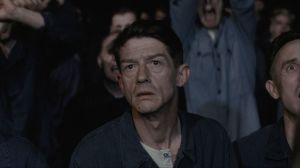If you’re a fan of the Marvel Cinematic Universe there’s one thing you probably know with a solid measure of certainty: Thanos is the villain of Avengers: Infinity War. After all, he went to pretty brutal lengths to acquire the Infinity Stones and then snapped his fingers and dusted countless lives across the universe. That’s clearly the work of a villain.
Videos by ComicBook.com
It turns out, that depends on your perspective and how you weigh out overall actions and consequences. A new study from Pennsylvania State University and presented at the American Academy of Pediatrics (via IFLScience) finds that while some villains may have some dubious morals and values when it comes to their actions it’s the heroes who carry out more violence overall.
The researchers watched 10 of the top-grossing superhero movies between 2015 and 2016, both Marvel and DC — think films such as Avengers: Age of Ultron, Suicide Squad, and Batman v. Superman — categorizing the major characters into good guys/protagonists and bad guys/antagonists. From there, they broke down each character’s actions and the findings are kind of surprising. Good guys had an average of 23 violent acts per hour while the bad guys averaged only 18. On top of that, the good guys were noted to be more likely to be seen fighting at almost double the rate of the villains, using lethal weapons, and destroying property.
The really shocking numbers in the analysis, however? “Heroes” were committed murder at an astounding rate (168 compared to 93 on the villain side). There was only one category of acts where villains took the lead — bullying/torture/intimidation with 237 instances for villains as opposed to 144 for the heroes.
For researchers, those numbers present a complicated view of superheroes as “good guys” since children often look up to their favorite superheroes as role models.
“Children and adolescents see the superheroes as ‘good guys’ and may be influenced by their portrayal of risk-taking behaviors and acts of violence,” lead author and Penn State professor Robert Olympia said. “Pediatric health care providers should educate families about the violence depicted in this genre of film and the potential dangers that may occur when children attempt to emulate these perceived heroes.”
However, while the numbers are surprising — and Olympia’s comments about making sure families are educated about how to mitigate the potential risks the violence depicted in superheroes films can cause worth noting — the study doesn’t appear to take the context of the actions into consideration. Fans could argue that when it comes to some of the categories, such as property damage fighting and possibly even use of lethal weaponry, those are actions prompted by the villains. For example, Thor probably wouldn’t have shown up Stormbreaker — a lethal weapon — to take on Thanos had Thanos not been trying to snap his fingers and wipe out half the universe. The Avengers probably wouldn’t have caused so much property damage in New York had the Chitauri not invaded in the first place, either, meaning that the actions of the heroes do not occur in a vacuum.
Of course, there will always be those who think the universe is better off with half of its life gone making Thanos the hero so your mileage may vary.
What do you think? Are heroes really the true bad guys or is the data not taking enough information into account? Or, do you still think Thanos did nothing wrong? Let us know your take in the comments.
Avengers: Infinity War and Ant-Man and the Wasp are now available as a digital download as well as on Blu-ray and DVD. Upcoming Marvel Cinematic Universe movies include Captain Marvel on March 8, 2019, Avengers 4 on May 3, 2019, and Spider-Man: Far From Home on July 5, 2019.








